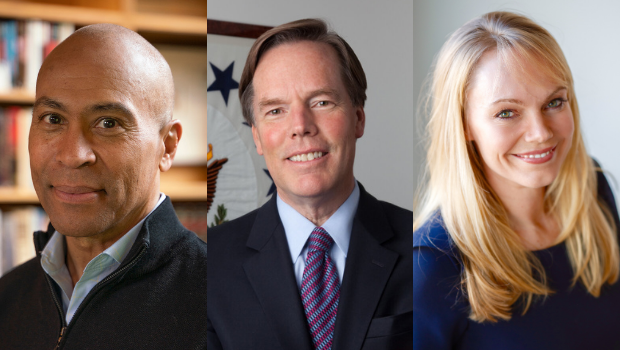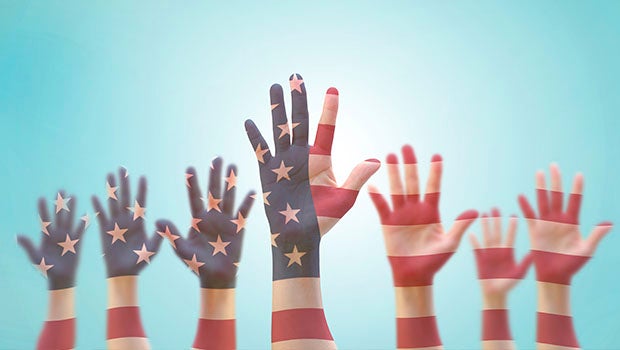
Above, Reese May, bottom left, with St. Bernard Project volunteers in New Orleans. (Photo Courtesy of Reese May)
*This piece was originally published on The Huffington Post.
On August 29, 2005, I was in Al Qa’im, a small Iraqi town on the Syrian border. I had three weeks left on my first deployment to Iraq and I could hardly wait to get home to my family. As my unit (an anti-terrorism Marine reserve unit comprised entirely of Mississippi and Louisiana residents) prepared for one of our final operations, we saw limited coverage of the storm’s approach on a chow hall TV. It was increasingly unclear to what “home” we might return. The rest of the story you already know.
The storm was devastating, the government response abhorrent, and even today, the recovery incomplete. Ten years later, more than 5,000 New Orleanians still lack the financial resources to return to their homes. The composition of many neighborhoods has changed and others have yet to return. But despite the storm’s destruction, and the ongoing problems with disaster recovery in America — New Orleans’ story is hardly all doom and gloom. In the years since Katrina, New Orleans has given many the opportunity to become our very best selves.

Put simply, New Orleans post-Katrina is one of America’s clearest demonstrations of the value of national service, a form of service that is just as important as the service carried out by men and women in uniform overseas.
My experience in the US Marine Corps taught me the value of service over self, but Anbar province offered nothing like the clarity of a devastated Lower Ninth Ward. In a moment, neighborhoods were totally upended. Generations of hard work and community, but for memories, were completely erased. In Iraq, the impact of our service was sometimes hard to see, but in New Orleans the value was crystal clear.
In August of 2011, I began my year of AmeriCorps service with St. Bernard Project. St. Bernard Project is a nonprofit recovery organization that uses volunteer labor to rebuild for disaster-impacted residents and families who cannot afford market-rate contractors. Through my service year with AmeriCorps, I saw firsthand how a poor government response, followed by long-term displacement — coupled with predatory contracting and forced mortgage payoffs — exacerbated circumstances that were already near impossible. I met families with few options and even less hope. But through well-organized service opportunities that leveraged countless volunteers, donors, and supporters, we were able to offer plenty of both.
New Orleans has always been an important American city both for its cultural vibrancy and historical relevance. In the years since Katrina, it has become even more so. The city itself is a testament to what is possible when we see our fellow citizens in need. New Orleans is a place where love and lore inspire action, a place where respect and reverence are often reason enough.
Since the storm, there has been no shortage of ways to aid our Crescent city and to add to the curious magic of its narrative by leaving fingerprints on its recovery, thereby contributing to its heritage, its residents, and its future. New Orleans renewed our awareness and our responsibility to one another and is an ever-present reminder of a moment when our institutions fell far short of our sense of humanity.
Despite it’s laissez faire traditions, New Orleans, almost instantly, became a place to get involved. It became a place where hard work and helping hands built hope, a place where the worldwide outpouring of support and commitment moved mountains. Indeed, this ‘commitment’ will be New Orleans’ enduring legacy. A commitment to get it right, to learn lessons, to develop and share best practices, and to ensure that no other community faces such insurmountable odds.
New Orleans taught us that we cannot always rely on our institutions to come to our rescue, and at the same time, there are moments where we simply cannot save ourselves. New Orleans’ recovery showed the world that service thrives in the space between those giant problems we cannot easily solve nor conscionably ignore.
The Franklin Project at the Aspen Institute, led by Gen. Stanley McChrystal, is working to create a country that enables service to thrive even more by striving to give all young Americans the opportunity to do a service year. They are working to make a year of service “a cultural expectation, a common opportunity, and a civic rite of passage for every young American.”
The rest of the country could stand to gain from the lessons of service in New Orleans. New Orleans taught us that the quickest way to finish is to start. It reaffirmed the value of the helping hand. New Orleans taught us that service and commitment are the proper tools to restore hope and humanity, and reminds us that we all possess them.
Reese May is the director of East Coast operations for St. Bernard Project. He served with Company “C” 4th Anti-Terrorism Battalion, USMCR from 2002-2008 (Iraq 2005, Iraq 2007-08).

